Working up my way up to a full day of running, I would pack a bag full bag of water and food and various layers to stay warm. With about three monitors in various places to measure my heart, my cadence, my speed. But the measurements were superfluous. I was just going for hours. Trying to stay hot. Trying to stay moving.
That’s how my weekly long runs have gone this year after taking about 5 months off from training: one step at a time.
Everyone always talks about what happens when you have overtraining syndrome, and when you’re starting to see the physiological symptoms of overstressing your system. Everyone knows what the signs are, and how it has crushed so many outstanding runners. But no one talks about how to come back from it to race again.
Keeping the big picture in perspective, I’ve worked hard to maintain my physical and mental wellbeing. While putting in some steep long days in the mountains, but trying to avoid an early peak in fitness. And now here in La Palma after a mediocre finish at Transvulcania, I’m satisfied that I’ve done just that.
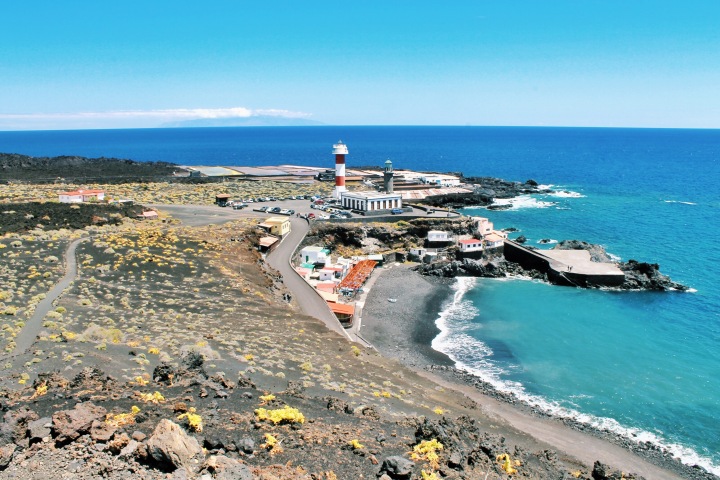
In 2015, I started my season training harder than ever after my first competitive year of running in 2014. I came off top 10 at North Face Endurance Challenge in December wanting to run. Faster. That first competitive season racing felt successful: a few wins, a couple course records, a bunch of PRs, and then a top ten at one of the most competitive races in the world.
I took less than 3 weeks of and started back into my biggest mileages ever. I hired a coach, and I thought I was on my way to finding my “potential.” Because of that inquenchable stoke, in 2015 I peaked super early in fitness reaching a surprising amount of PRs in speed in early March and April only to get injured and spend the rest of the year working through injury. I still did well placing 4th in the world Skyrunning series and 2nd in the US, but I felt compelled to try harder.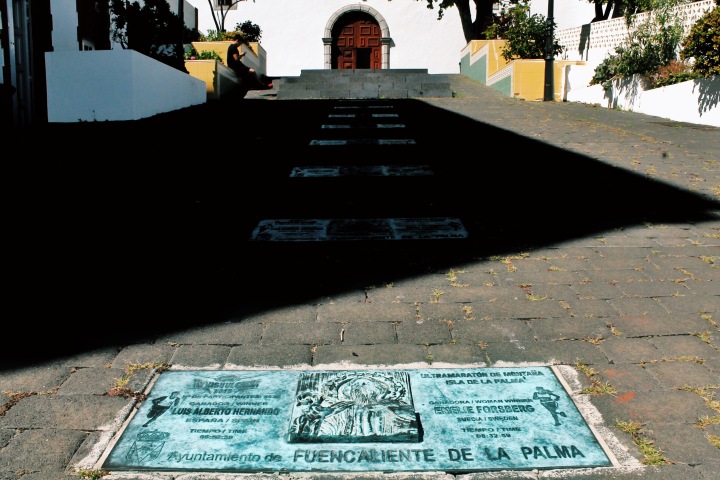
The next year, I started my season coming off a recovery from injury and was desperate to get back to training. I ramped up too fast, hit some even more surprising PRs in March and April, only to be completely incapacitated by illness related to overtraining in April and May. This caused me to be unable to start Transvulcania and after missing several weeks of work I wasn’t doing well on the home front. Most of my fitness peak was lost and I entered my race season worn down and stressed out. I survived the season, taking 5th in the world and 3rd in Spain, Andorra and Portugal. But again, I didn’t feel great.
The truth is you can’t peak in fitness for 5 months straight, let alone all year. You can steadily build your endurance, and in some cases you will get lucky to have a blossoming of speed at just the right time to achieve a great result. Many famous runners have become international superstars due to this phenomena. I haven’t experienced it myself. I’ve tried hiring coaches, but they just get frustrated with me. I learned from them that I want to race too much, I work too much, I don’t sleep enough, and I over analyze everything.
And I ask too many questions. Like, am I actually getting better at running mountains? And is there a way to measure that?
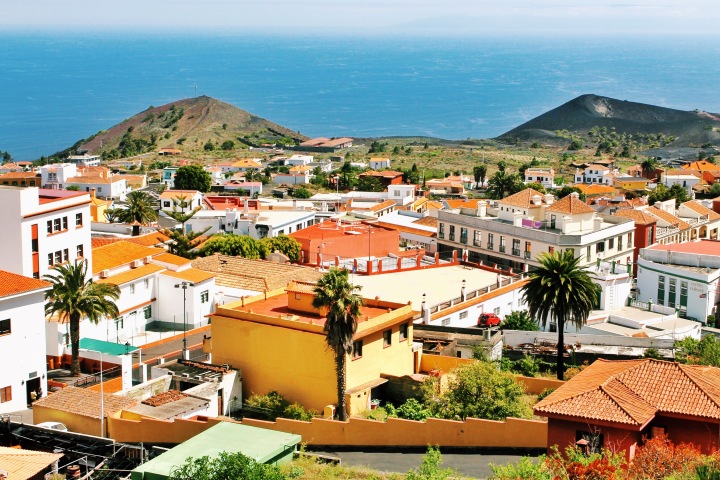
The clinical measurement for running better over distance is improved running economy or how much oxygen you are consuming for a given speed. It indicates how much energy it takes you to go fast and is related to running efficiently. If you have good biomechanics and good power to weight ratio, it will take less energy to propel yourself forward. For endurance runners this means you can go faster for longer. This of course can be measured in a lab setting. But outside of a lab, you can measure correlates in terms of relative rate of perceived exertion (how hard it feels to run at a given speed for a given distance) or how fast your heart rate is at a given speed for that distance. Monitors are now advanced enough to measure other metrics that can give you a more concrete output of efficiency that would be correlated to your economy as a runner. But generally coaches just go by how a runner feels.

Generally, I feel great. And a small sense of victory knowing I’ve run over 200 miles less than I did in 2015 up to this point this year, with a lot less hours invested. And I still ran the same course 17-minutes faster with a greater sense of ease and a faster rate of recovery. I think these are some of the truths runners should measure themselves by, instead of say, what place did you finish? This is one thing I learned from the coaches I’ve worked with: you cannot measure your progress based on someone else’s progress.
I’ve never finished a Skyrunning race in as low of a place as I did at Transvulcania this year. The first time I raced, I thought if I was lucky I could pull of top 15 and I got 6th. This time, I was hoping for top 5 and came in tenth. But it could have gone worse, much worse. Actually, seriously, much worse. (My last race at Ultra Pirineu in Spain in September I ended up with some combo of hyponatremia and rhabdomyolysis, and I didn’t think I’d ever run again. And last time I finished TV just behind Tim Olsen, this time just behind Hayden Hawkes, because TV is a brutal race and can rip your guts out and stall your brain.)
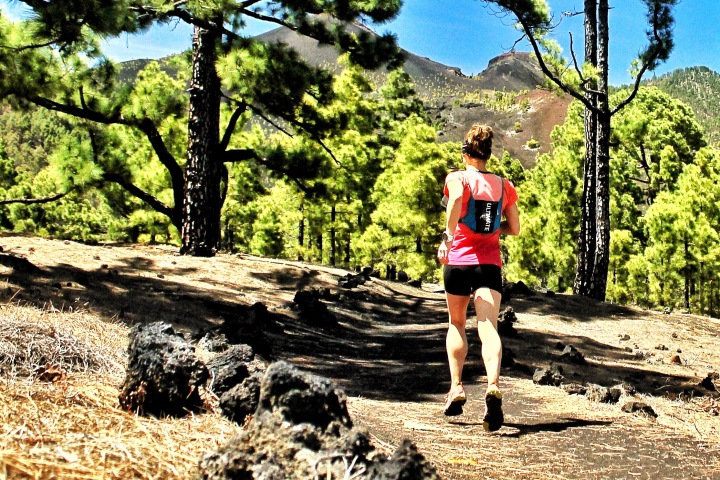
In the past, I’ve found I don’t do well doing races for training. Its hard to hold yourself back and it’s hard to run slow and not be frustrated. I don’t do it or recommend it. But racing in series, you have to consider the season as a whole. You have to race even when you’re not in top form. I knew coming to Transvulcania this year, I was pitting myself against some of the best ultra distance skyrunners who would be coming into the race primed and ready to go. And these women are incredible, professional athletes who travel to race all summer and all year in some cases! So I had to choose to come here and run my own race. I wrote my times from 2015 on my bib and I focused only on those, nothing else.
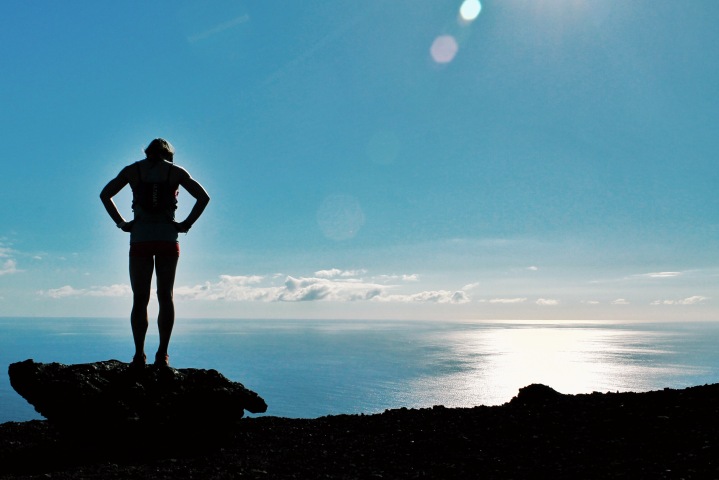
I don’t feel afraid or worried for my season because I know this is a journey and it’s not always going to be unicorns and rainbows. And because I felt relatively at ease running 45 miles over a volcano at 8500′ off the northwest coast of Africa. (After training in snow on grassy hills at low elevation–without a coach.) And I was able to race. Period. Not sick or injured, no 13 doctors or 35 clinical tests to see if I could recover or would recover. Just not in great shape. That’s a small accomplishment! If you’re like me and have struggled with any injury or illness and are facing the foreboding work of ramping back up for another season of racing: embrace the small victories, take it one step at a time, and measure your progress by what you can control like choosing to have a great attitude today!
Kristina, GREAT post. I love the candor and sentiment you portray about coming back from overtraining. I know it’s hard not to put the foot down on the accelerator when you’re talented, as I’ve seen some friends in that situation. They get a taste of success and they want to keep it going! I’m glad to see you’re back to training and hopefully you’re finding some good balance and have learned a thing or two. If you remember, back when you were in the midst of all that racing and facing a few struggles, I was being a bit of a pain in the ass and mentioned to you ‘The Big Book of Endurance Training and Racing’ by Phil Maffetone. As I do with both talented runners like you and mediocre runners like me, I recommend you check out Phil’s information. His entire philosophy is about how to train, eat, deal with stress, live and race well, all while staying healthy. He did a lot of work back in the day with Arthur Lydiard and worked with many amazing athletes (still works with a few, but he’s mostly retired from coaching). I know there are a million ways to train, but I’m telling you Kristina, check out the book. Best 15 bucks you’ll ever spend, and the info is quite eye opening. I wish you the best and a great year along with great health!
Hey I just thought about you because I’m reading it again! Thanks so much for the suggestion. I meant to get in touch and let you know. It is helpful and I’m impressed by his accomplishments and philosophy. Good perspective! And thanks again for the great advice. Very greatly appreciated!
Hey Kristina, after following the race this weekend with Maria and thrilled that you closed so well to finish top 10, I was curious to hear how the race went. This report was more than I could have hoped for being the running geek I am.
On the one hand, it’s hard to tell how “big” the race is because we only have a certain view of it… the perspective of the US runner mostly following US media outlets and US elites. When it’s covered by irunfar the hype back here in the US can be overblown compared to Europe so it’s just hard to tell. However, we did know the fields were competitive given the names we knew but didn’t give it much more thought than that. We also knew that you’d finished 6th in 2015 but figured it was more competitive this year just as a general rule. Still, I thought it was a good race so hearing your “mediocre” description got me thinking. My guess is that your “lack” of training going into the race is skewing your view of the results to some degree. This race and all races for the most part are getting more competitive by the year and I would argue, much more so on the women’s side. Check out this analysis of 2017 vs 2015…
Men
1. 10 min slower, 2. 3 min faster, 3. 2 min slower, 4. 1 min faster, 5. 6 min slower
6. 6 min slower, 7. 6 min slower, 8. 3 min slower, 9. 8 min faster, 10. 7 min faster
Total: 14 min slower this year compared to 2017
Women
1. 28 min faster, 2. 29 min faster, 3. 36 min faster, 4. 33 min faster, 5. 20 min faster
6. 40 min faster, 7. 38 min faster, 8. 36 min faster, 9. 37 min faster, 10. 43 min faster
Total: 5 hrs and 40 min faster this year compared to 2017!!!
Absolutely no comparison. There are so many variables and ways to look at results and maybe I’m missing something but this is so clear I don’t think it leaves much question as to the outcome. Time to reassess your “mediocre” race 😉
Haha Tad you are so awesome. I never looked at it this way before! You’re right the women are getting much faster and more competitive it’s amazing. Thanks for the perspective. Truly, truly appreciate it 🙂
That should say “this year compared to 2015” of course 🙂
AND this 2016-2017 course is slower because they added that weird downhill/uphill to the aid station they added after everyone ran out of water in 2015 😉 The women were cruising!
Ha Corrine true! So glad they did add that aid because I would have ran out of water again for sure. But that may just indicate Ida is likely to go sub 8 someday! thanks girl xo